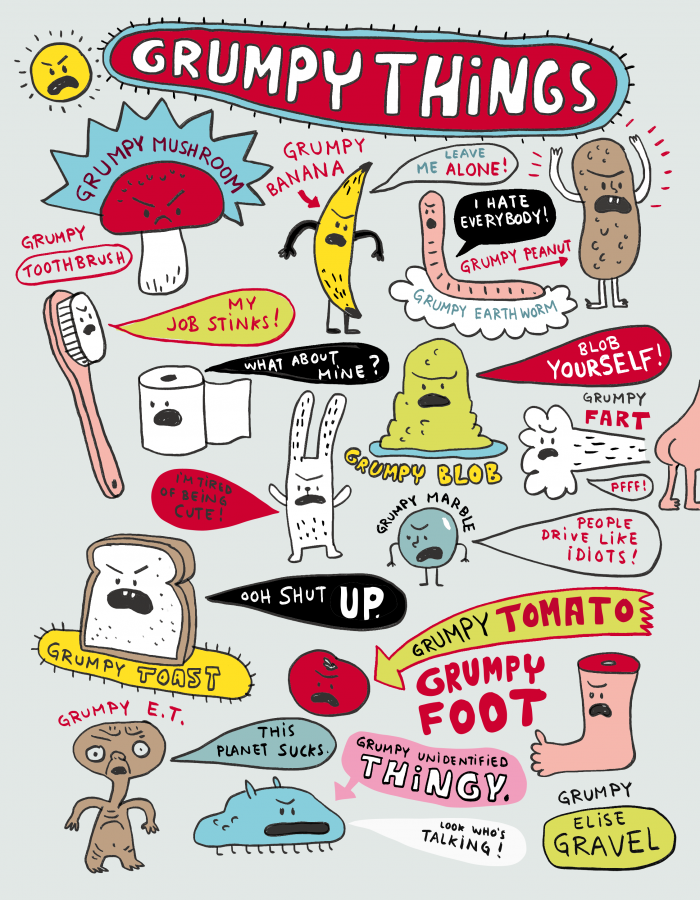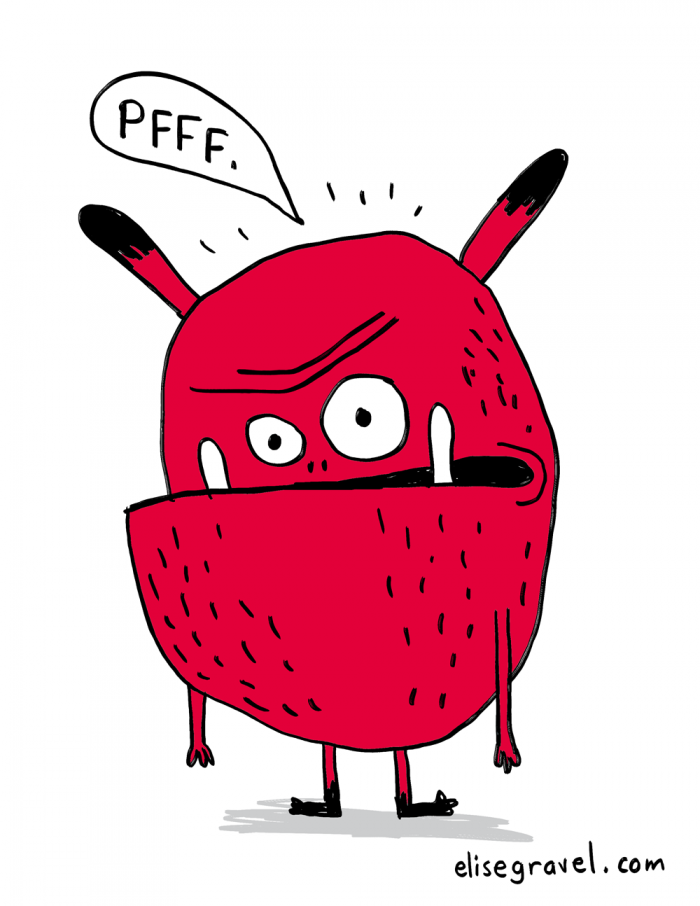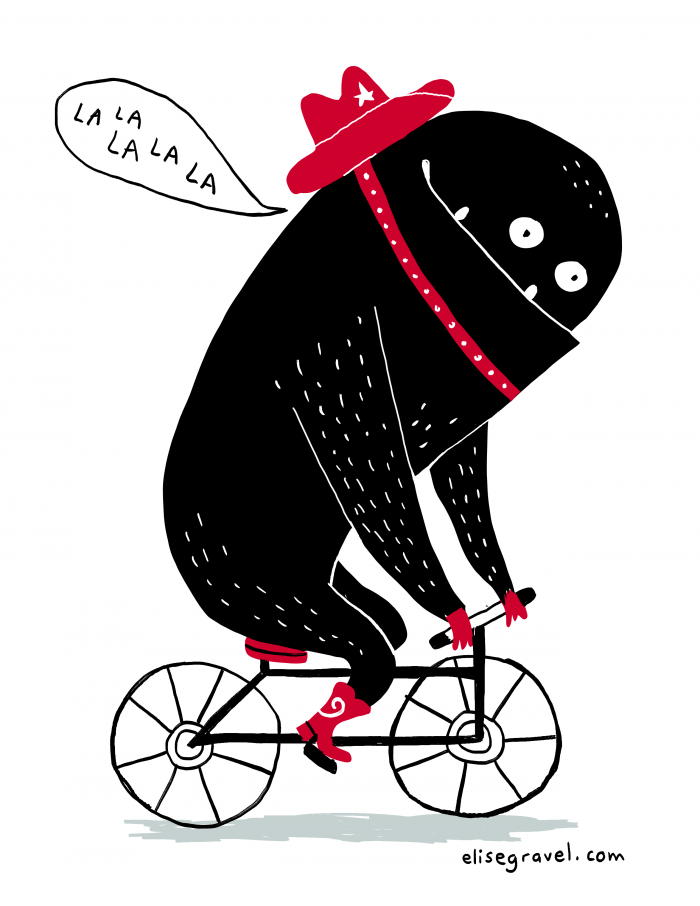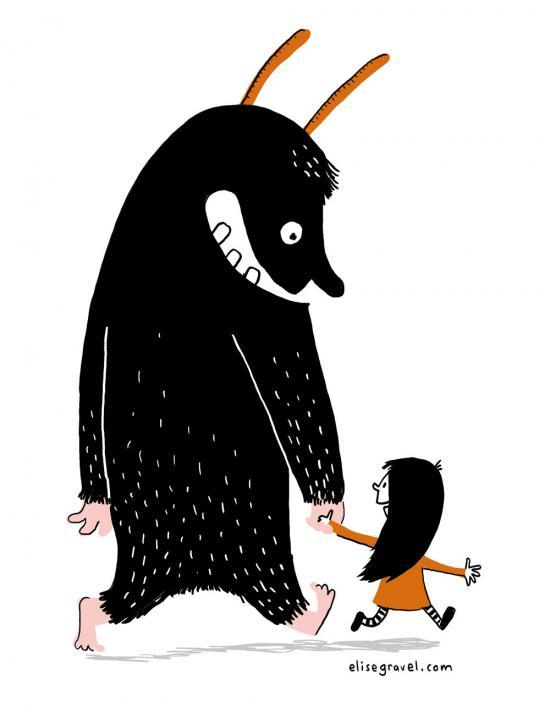Fox

This one is for my daughter, who’s been obsessed with foxes ever since she read Jane, the fox and me, by Fanny Britt and Isabelle Arsenault.
The rat and The slug
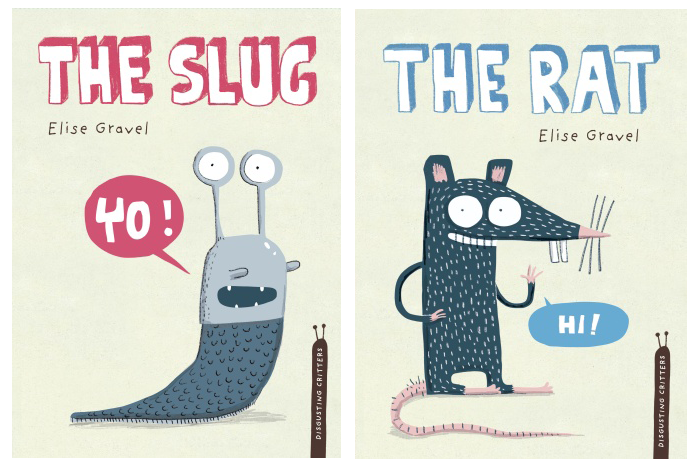
They’re in bookstores now!
The slug:
The Slug is a look at the land slug. It covers such topics as the slug’s two pairs of tentacles, one pair for seeing, one pair for smelling (it can see you’re a kid and smell like broccoli), its breathing hole (on the side of its head!), and its pretty gross mucous covering (in order to find a partner, the slug can follow another slug’s mucous trail. True love!). Although silly and off-the-wall, The Slug contains real information that will tie in with curriculum.
The rat:
The Rat is a look at the black rat. It covers such topics as the rat’s long, agile tail (it’s good for balancing and picking noses), long teeth (they can chew through anything, including books) and disgusting taste in food (delicious electrical wires in tomato sauce, anyone?). Although silly and off-the-wall, The Rat contains real information that will tie in with curriculum.
Kid’s definitions of a “hipster”
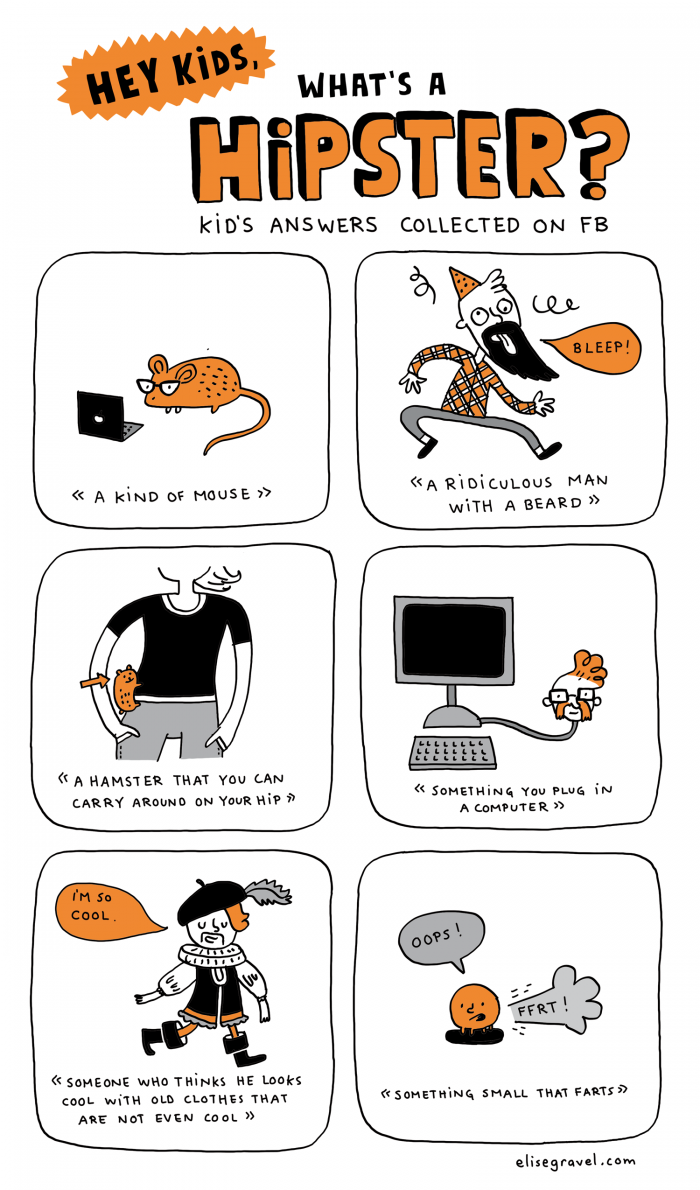
I was working on a book and I needed to know if most kids knew what a hispter was. So I asked my parent friends on FB; here are some of the answers I got.
Monsters saying stuff
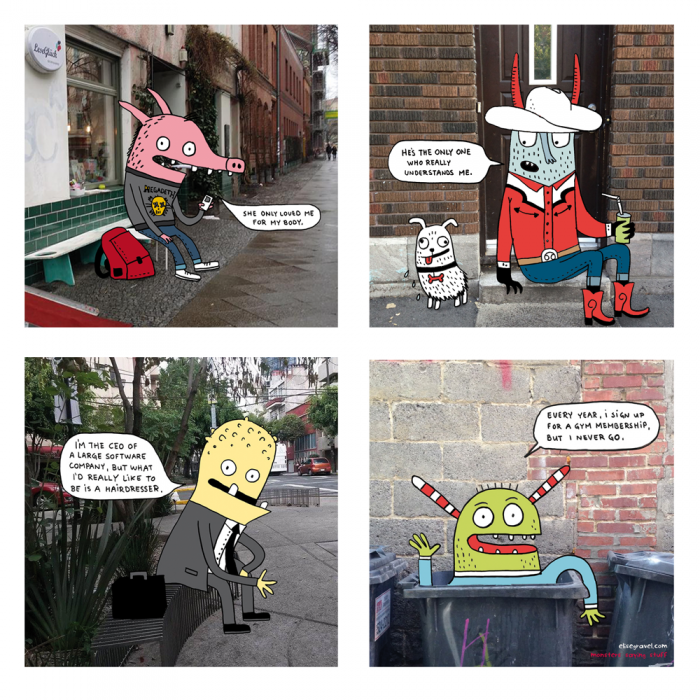
Here’s my new silly project: Monsters saying stuff. It will be a bit like Humans of New York, but with monsters instead of humans, and not always in New York.
Advice for the parents of an anxious artist
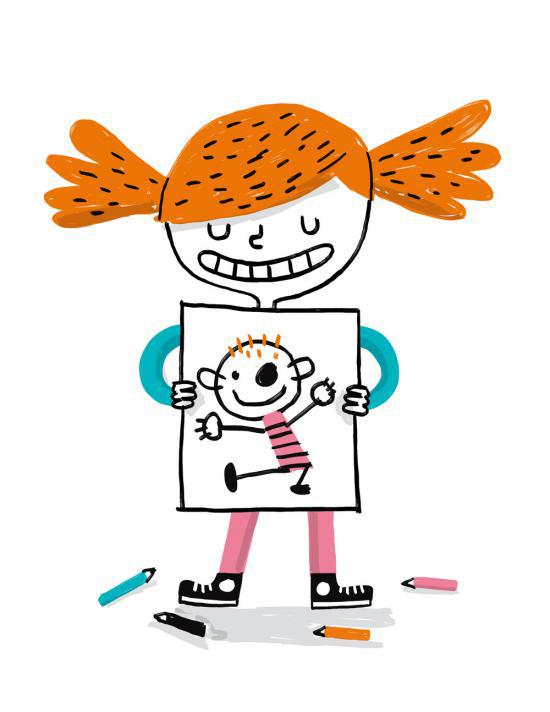
I like drawing. I don’t draw perfectly: I don’t always achieve what I want to, and sometimes I look at what I’ve drawn and I think “this is crap”.
But it doesn’t matter: I like drawing, so what?! I have a blast when I draw.
And since I would like my kids to have a blast as well, I’ve thought a lot about how I can communicate my passion to them. I have two kids who are truly ‘artistes’, who tend to doubt themselves a lot. Anxious temperaments, like their mom. It’s not easy to encourage their self-confidence as artists.
My girls produce about 3245 drawings per week. Their drawings invade the house, their backpacks, their bedroom walls, my office, and if I don’t watch out, they’ll soon be lining the sides of the cats’ litter box and the inside of the fridge cheese drawer. You would think they secreted drawings out of their pores, like dromedaries (you didn’t know that dromedaries secreted drawings, did you?)
It means that, in raving about their work, I’ve 1) developed cramps in my jaw and 2) discovered that the way that I react has a huge impact on their self-confidence.
I’ve discovered that for my girls “Your drawing is beautiful!” or “You’re so talented!” are anxiety-producing comments. It’s as if they’re scared that they’ll drop in my esteem if they mess up a drawing.
One day my youngest, who is a particularly stubborn drama queen (like her mom), started to panic because she thought that one of her drawings wasn’t good. She tore up her work and starting to cry, yelling “I’m no gooood!”.
That’s when I understood that the end result (my approval) had become more important to her than the activity itself. She no longer drew for pleasure: she drew to please. She tried to conform to the level of quality that she thought was necessary to maintain my approval. So that’s when I started to change how I reacted to her work.
Now when she comes to show me her drawings, I try to talk to her without expressing value judgments. I no longer say that her drawings are “beautiful” or “good”. I try to express appreciation for the pleasure that she experienced in drawing, the effort that she put into it, and the risks that she took. I want my comments to bring her back to what she herself likes in her drawings.
I discovered that comments formulated as questions are particularly effective in encouraging my daughter to talk about her process, what she’s proud of, and how she wants to improve.
Here are some examples of things that I say to my youngest when she shows me her creations. My objective is for her to understand that what is important to me is what she experiences in the drawing process, not the result achieved by the dazzling stroke of her pen.
-
This drawing is so detailed! Did you work really hard on it?
-
This purple sun is so original! Did you come up with this all by yourself?
-
I see that now you’re putting Manga eyes on your characters. Do you like the Manga style?
-
I heard you laughing to yourself when you were drawing Monster High. Did you have fun drawing it?
-
You used to have a hard time drawing hands, but now you can do it! Does this make you proud?
-
What’s your favourite part of this drawing?
And my favourite comment, which I get a lot of mileage out of, is:
-
I love watching you draw.
We live in a performance-based society in which the opinion of others takes on a disproportionate importance. If there’s one area in which a 5 year old should be free from the pressure to succeed, it should be finger-painting, right?
Well, that’s enough for today; I need to go clean the dromedary litter box.

